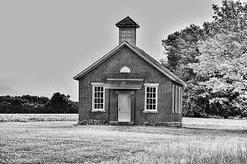
Though I do not believe in silver bullets, I do believe that the emergence of the micro school model is the most important macro trend in education since 1893 when our “modern” school system was designed.
Now that I have your attention, allow me to share a few thoughts on what a micro school actually is…
Last month I had the pleasure of addressing this very question on a panel at SXSWedu with Matt Candler of 4.0 Schools and Elliot Sanchez of Unlearn Education. Both have thought, written, and (most importantly) done a lot in this realm, and I strongly encourage you to check out their work.
So first the obvious: yes, it’s true… micro schools are indeed small. But how small and why? We agreed on our panel that no bigger than 150 was about the right number, and that a lot of it has to do with Dunbar’s number. For those unfamiliar, British anthropologist Robin Dunbar in the 1990s suggested that 150 is the cognitive limit to the number of people with whom one can maintain stable social relationships — relationships in which an individual knows who each person is and how each person relates to every other person.
Let’s be clear: this idea is as radical as it is old. Many of us are asking how schools today can be more personalized — more human. Less institutional. Less one-size-fits-all. One answer is to simply look in the rearview mirror! After all, before we set off in the late 19th century to build a school system for the industrialized age, the one room schoolhouse was a small (dare I say micro), relationship-driven community of learners.
And while we’re at it, let’s be equally clear about another radically, old idea: that the learning relationships that matter most in a micro school model done right are those between the students. A smaller, relationship-driven school enables all humans (regardless of age) to be more human with one another — and to learn more from one another.
Does this diminish the role of the teacher? Per my last blogpost, I’m all about the stunning colleague! However, this is another rear view mirror moment, as it takes us back to the two driving principals of a Thomas Jefferson education — that learning ultimately comes down to 1) the student putting in the work to educate themselves and 2) the teacher getting the student’s attention long enough and deeply enough for that student to get started and keep going. In fact, I would argue that the “sage on a stage” model where an adult with all the answers stands in front of the classroom to share said answers and discipline said class is responsible for diminishing the role of the teacher. Instead, the real stunning colleague is the “guide on the side” who asks great questions and builds agency in learners — who builds their desire and capacity to learn independently.
Lastly, a micro school offers significant operational advantages. My friend, Beth Heaton Seling, put it well years ago: “New school design is anti-lean startup. You spend 18 months designing an untested, un-iterated school model and then — bang — you open a school that will be around for 100 years.” When 70 percent of the cost of most schooling models are tied up in people and buildings, it’s no wonder that for so many of the schools that say “it’s all about the students” — it just simply isn’t.
At Blyth-Templeton Academy, we’re very proud to have embraced the micro school model and the level of learning, personalization, and community that comes with such a structure. Our focus on each and every one of our students is unencumbered and I know that if you have the opportunity to talk to our students and parents, you’ll find that this type of environment is having a profound impact on learning.
That said, if you’re in and around D.C. this month, why not come pay us a visit and see for yourself at one of our upcoming events?!
Not in D.C.? No problem! Here are some of my other favorite micro school models that may be closer to you:
Thanks for reading — and for caring!
Temp
 RSS Feed
RSS Feed